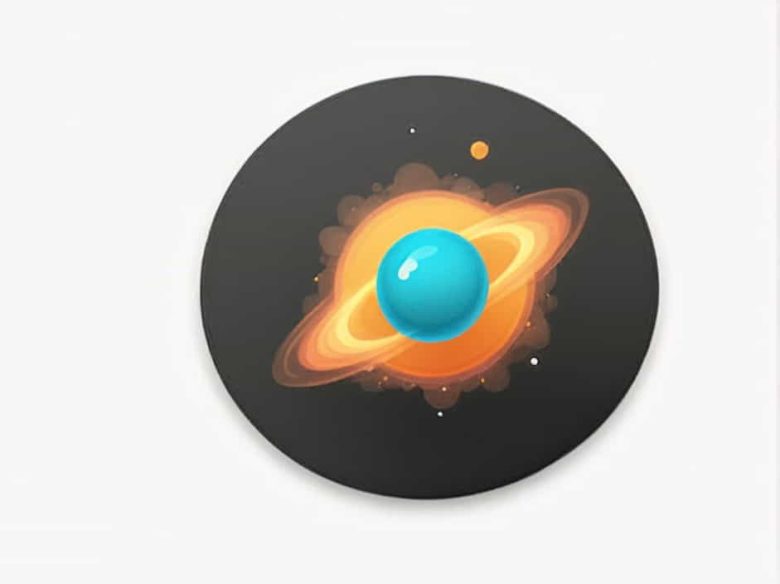When people hear the term planetary nebula, they might assume it refers to a region where planets are formed. However, this is a common misunderstanding. Planetary nebulae are not actually places where planets are born—instead, they are the glowing remnants of dying stars.
So, why do they have this misleading name? What role do planetary nebulae play in the life cycle of the universe? In this topic, we will explore the nature of planetary nebulae, their formation, and their contribution to cosmic evolution.
What Is a Planetary Nebula?
A planetary nebula is a shell of ionized gas ejected by a dying star in its final stages. Despite the name, these nebulae have nothing to do with planets. The term was first used in the 18th century by astronomer William Herschel, who noticed that these glowing clouds resembled planets when viewed through early telescopes.
Characteristics of Planetary Nebulae
- Colorful Appearance – They shine in various colors, depending on the elements present, such as hydrogen, helium, and oxygen.
- Expanding Gas Shells – The material ejected by the dying star spreads outward into space.
- Short Lifespan – Planetary nebulae last for only a few thousand years, a brief moment in astronomical terms.
How Do Planetary Nebulae Form?
- A Star Like the Sun Reaches the End of Its Life
- When a medium-sized star (like our Sun) burns through its hydrogen fuel, it expands into a red giant.
- Outer Layers Are Ejected
- The star sheds its outer layers, creating a glowing shell of gas.
- The Core Becomes a White Dwarf
- The remaining core shrinks into a white dwarf, while the ejected gas continues to expand and glow.
- The Nebula Eventually Disperses
- Over time, the gas spreads out, blending into the surrounding interstellar medium.
Do Planetary Nebulae Create Planets?
While planetary nebulae do not directly form planets, they enrich the universe with heavy elements essential for planet formation.
The Role of Planetary Nebulae in Cosmic Recycling
- Creating Heavy Elements – Elements like carbon, nitrogen, and oxygen are expelled into space, later becoming part of new stars and planets.
- Enriching Molecular Clouds – These ejected materials mix with interstellar gas clouds, contributing to the formation of future solar systems.
- Influencing Star Formation – The gas from planetary nebulae can trigger the birth of new stars in nearby regions.
How Are Planets Actually Formed?
Unlike planetary nebulae, planets form in protoplanetary disks around young stars. The process involves:
- A Molecular Cloud Collapsing – A dense cloud of gas and dust collapses under gravity, forming a new star.
- A Protoplanetary Disk Developing – The leftover material forms a rotating disk around the young star.
- Dust Ptopics Sticking Together – Small dust grains collide and merge, growing into larger objects.
- Planets Taking Shape – Over millions of years, these objects grow into planets, moons, and asteroids.
Famous Examples of Planetary Nebulae
Many planetary nebulae are visible through telescopes and have fascinated astronomers for centuries. Some well-known examples include:
1. The Ring Nebula (M57)
- Located in the constellation Lyra, this nebula is famous for its bright, ring-like shape.
2. The Helix Nebula (NGC 7293)
- Sometimes called the “Eye of God,” this nebula is one of the closest planetary nebulae to Earth.
3. The Cat’s Eye Nebula (NGC 6543)
- Known for its complex, layered structure, revealing details about stellar evolution.
4. The Dumbbell Nebula (M27)
- A large and bright planetary nebula, easily observed through small telescopes.
The Future of Our Sun: Will It Become a Planetary Nebula?
Yes! In about 5 billion years, our Sun will go through the planetary nebula phase. As it runs out of fuel, it will expand into a red giant, shed its outer layers, and leave behind a white dwarf, just like the stars that create planetary nebulae today.
Although planetary nebulae are not the birthplaces of planets, they play a vital role in shaping the universe. By recycling elements into space, they provide the building blocks for future generations of stars and planets.
Understanding planetary nebulae helps us see the bigger picture of cosmic evolution—how stars live, die, and contribute to the creation of new worlds. The next time you see an image of a planetary nebula, remember: it is not where planets are born, but where a star’s story comes to an end.



